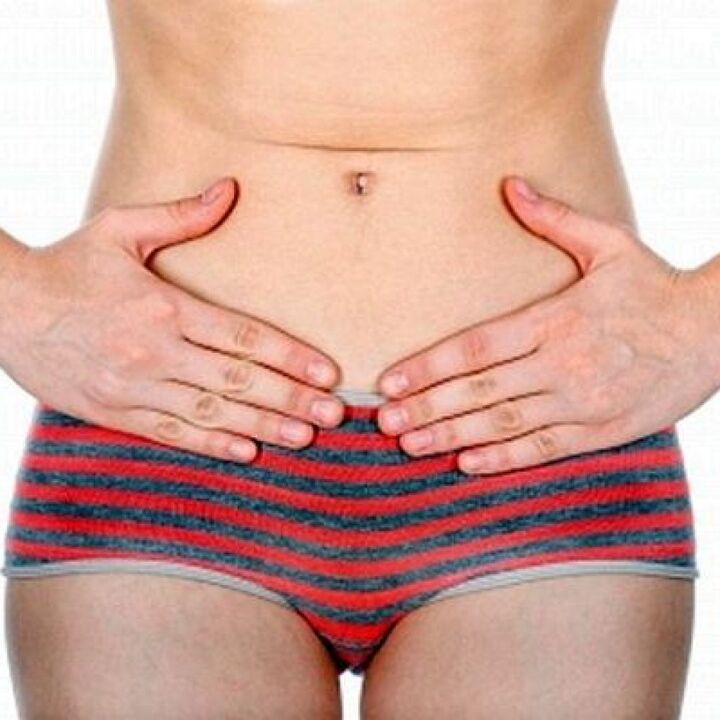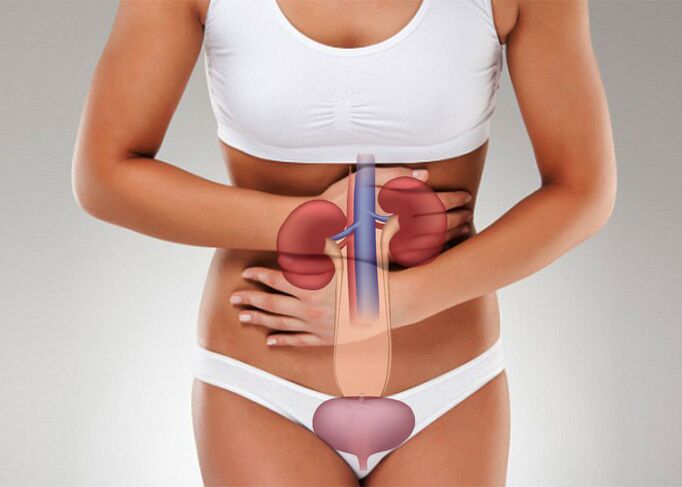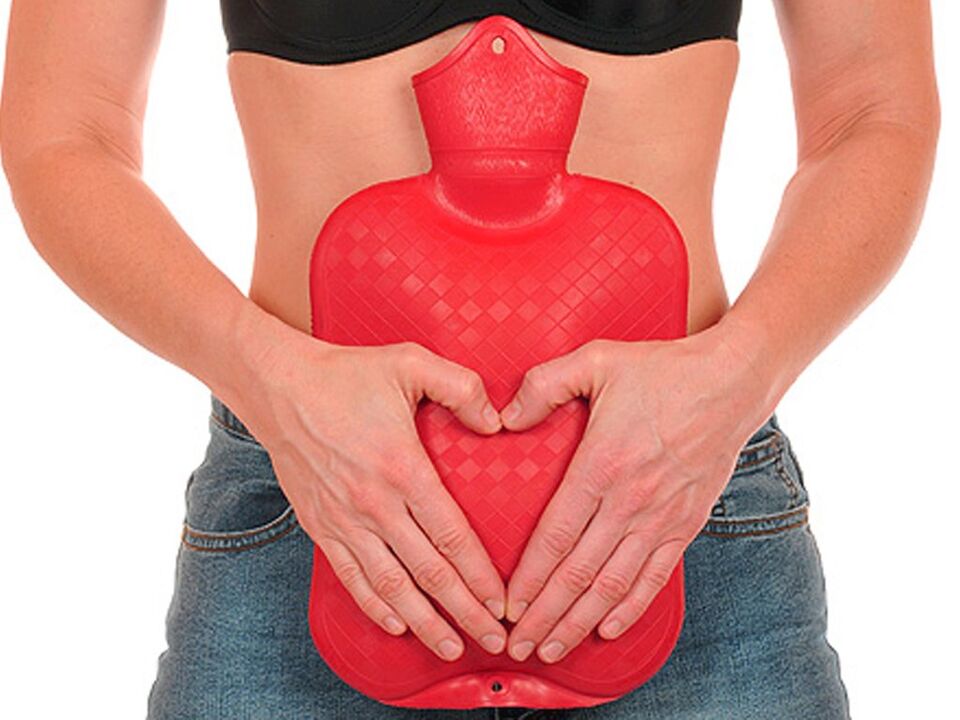In the urinary system, the bladder plays the role of a collector's storage collector: exhausted blood filter products come from the kidneys across the ureters.It is thanks to the bladder and two muscle rings, one of which obeys conscious controls of the central nervous system, a healthy person can make urination as necessary, need and opportunity.The "possibility" in the first stages of evolution was signified, first of all, a safe atmosphere;With the advent and development of human civilization, urination began to demand special conditions, that is to say a break in social activity, a place and / or a loneliness specially designed on the part of the representatives of the opposite sex.

Cystitis is an inflammatory process on the internal walls of the bladder;A disease that causes pronounced physiological and psychological discomfort, as well as certain social maladessers.A person of all ages and any sex can face this misfortune, but it is no coincidence that cystitis is sometimes called a curse of a modern woman (it would be more correct to say "one of the curses", because it is not the only disease of this type).The main reason lies in the anatomy: compared to the male female urethra (urethra) is much shorter, more elastic, wider and more straight.This creates extremely practical "doors" for the penetration of ascending urogenital infections, the prevalence and variety of which in the modern world is really very large.And although all cystitis have an infectious nature, it is the mechanism described of its development which is a key factor in inter-show epidemiological differences: according to different sources, in active age, cystitis occurs 6 to 8 times more often than in men.
In general, statistical analysis allows you to assess the problem from various angles.Thus, many sources indicate that at least one cystitis attack during life knows at least half of all women;At a minimum, each fourth is sickly or chronically sick (some authors even consider this very low data, because not all sick people are looking for a doctor).According to medical documentation, in clinics, among all urological patients, the share of patients with cystitis reached 67%;In urological hospitals, this indicator is 5 to 12% (in other words, the percentage of hospitalization in cystitis is also very high, which once again confirms the social meaning of this disease).The frequencies of acute and chronic shapes are approximately 2: 1.
The difference in incidence between floors is leveled at elderly and senile age: in older age categories, the proportion of men is mainly ill of cystitis is comparable to a similar percentage of women.But in a mature, young, young age (and sometimes in adolescence or even a child), when to live, it seems, to rejoice!- Cystitis awaits and mainly chooses women.
Reasons
According to infections, the wall of the bladder is protected by nature, in principle, quite well;The predominance of the infectious etiology of cystitis is not due to vulnerability as such, but by a combination of a high probability of infection by unfavorable external and internal conditions, most of which are linked to lifestyle.The main risk factors include all acute and chronic infections in other body systems (from caries and colitis to acute respiratory infections - sexually transmitted diseases), hypothermia, hypovitaminosis, after surgical depletion, unhealthy diet, overcharging and permanent sleep deficit, Psychotial stress,(non-transitional "" "" insufficient hygiene (it is difficult to imagine how hygienic skills and needs can be insufficient in the 21st century, and yet this factor remains important). Etcons returning to the question of statistical differences between the sexes, we mention another, in addition to the anatomical, the cause of endocrine, namely the fluctuations of the hormonal background (in particular, exacerbationsIn the phase of the menstrual cycle, pregnancy or menopause are separated in the literature).

We also note that the infection can enter the bladder not only ascending, but also descending paths - of the kidney affected by nephritis.
Non-infectious forms include chemistry-toxic (including drugs), allergies, radiation, trauma, parasites.
Symptoms
Classic symptoms of cystitis include, first of all, intensive discomfort during urination: rubbing, pain, burns, etc.Often the urination leaves the feeling that the bladder is not completely emptied;Many patients complain of a repeated or false desire, note the "flight" of urine in the linen or the imperative nature of the desire (because, once again, the anatomical reasons are more inherent in women who "often do not have time to run" and are therefore obliged to remain constantly closer to the toilets).In some cases, the disorder or a mixture of blood in the urine is revealed;Hematuria should be considered as the most dangerous urological symptom and requires an immediate differential diagnosis, because the presence of blood in the urine can be caused not only by cystitis, but also for the causes of life.
It is typical and, as a rule, seriously expressed with the cystitis of the pain syndrome: draw or spicy pain, exploded or painful in the bottom of the abdomen, often with irradiation in the crotch or back.Without such or similar pain, no more than 10% of all cystitis procedures.With a sufficient immune response, general discomfort, fever, weakness, headaches are often intense.
The Most Likely and Severe Complications of Cystitis Include The So -Called Its Interstitial Form, When Not Only the Mucous, But also A Deeper Muscle Layer of Bubble Walls is Involved in the Inflammatory Process (Ultimately this can lead to the Winkling of the Bubble and Its Pronounced Failure)Well as the Spread of infection to adjacent organs, where it can cause very, very serious consequences (pyelonephritis, infertility, etc.).
Diagnosis

In addition to a clinical survey and a standard urological inspection (however, many women prefer to treat cystitis not to an urologist, but to "their" gynecologist), laboratory tests are mainly prescribed.To date, a large part of all kinds of pathogens detection methods is used successfully - as indicated above, the most likely cause must always be considered as a bacterial, viral or fungal infection.As a diagnostic necessity, ultrasound, lower than cystoscopy, less than cystography, biopsy and other studies are also prescribed.
Diagnosis
In addition to a clinical survey and a standard urological inspection (however, many women prefer to treat cystitis not to an urologist, but to "their" gynecologist), laboratory tests are mainly prescribed.To date, a large part of all kinds of pathogens detection methods is used successfully - as indicated above, the most likely cause must always be considered as a bacterial, viral or fungal infection.As a diagnostic necessity, an ultrasound, an internal study of the bladder, an X-ray study of the bladder, biopsy and other studies are also prescribed.
Treatment
Acute cystitis in chronic turns often, easily and insidious: the gradual reduction of symptoms, even its complete disappearance, does not mean recovery at all.Consequently, the signs of cystitis described above in one of their combinations (especially since these symptoms are inherent in many other urological diseases) require an immediate visit to the doctor and not the patient's expectations, while "passes".Along the way, we note that a large number of good, intelligent, friendly, proven for centuries and other similar advice on the Internet (where you can find recommendations in the range of completely reasonable to schizophrenic or fraudulent) is one of the factors of chronicle and frequent cystitis.
Based on the results of the diagnostic examination, a particular treatment regime, always strictly individual is always prescribed, aiming, first of all, to eliminate the cause of inflammation.In different cases, antibiotics, antiviral, antifungal drugs, immunomodulators and immunostimulants, antihistamines and anti-inflammatory drugs and antispasmodic can be used.The sanitation of chronic foci of infection in other areas is necessary, as well as the treatment of substantive diseases (nephrolithiasis, prostate adenoma, etc.).In addition, a diet, an increase in liquid intake and a savings regime in order to avoid hypothermia and other risk factors are necessary.Phytotherapeutic agents are prescribed exclusively by a doctor, and it also controls the effectiveness of their administration.
Subject to these conditions, cystitis is healed.




























